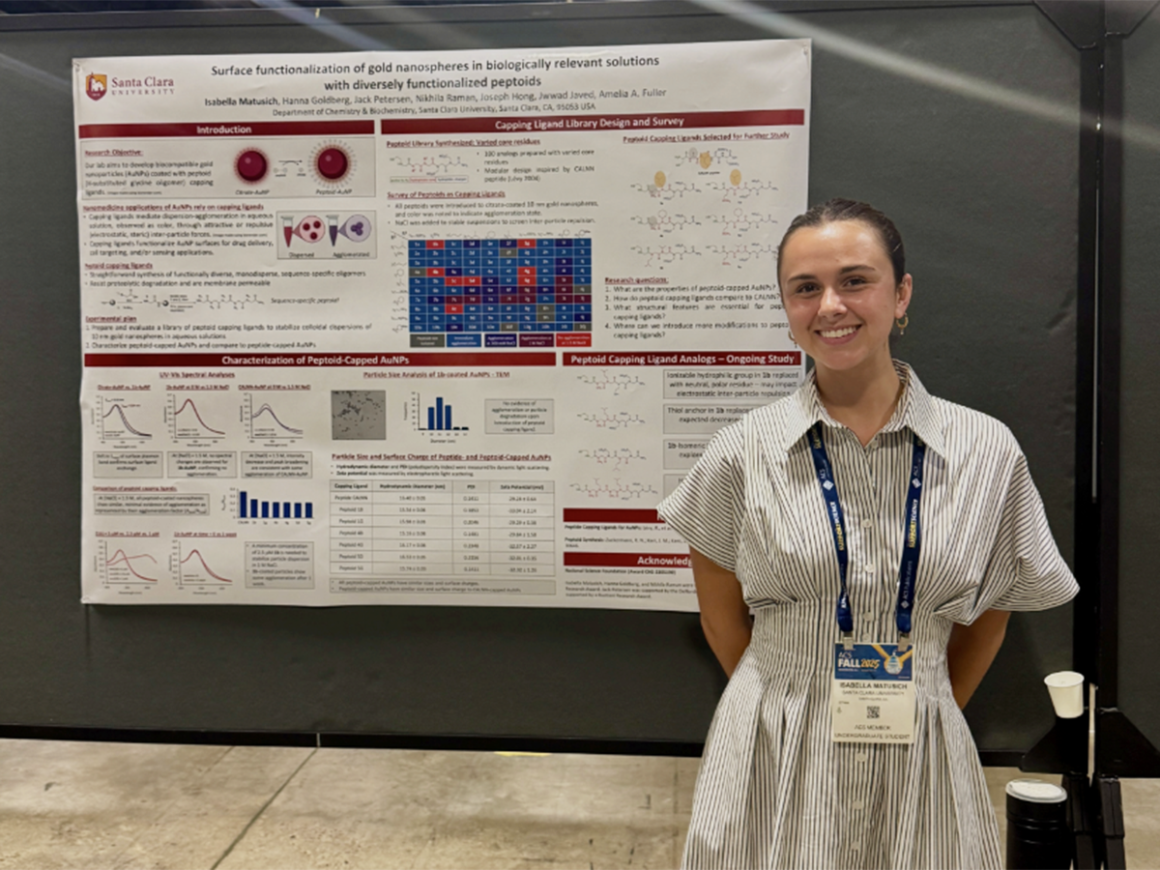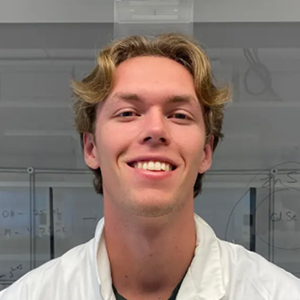With scientific curiosity and a drive to make a difference, Ritter Amsbaugh ’25 has left his mark at SCU as a researcher, leader, and teammate.
For Jack Petersen ’24, his research on gold nanoparticles in Amelia Fuller’s lab has a personal connection.
Amelia Fuller receives an award from the National Science Foundation to support her research on stabilizing gold nanoparticles.
A collaborative project between chemistry and art hopes to envision nanomaterials and explore their unique features.
The award will support his research investigating peptoid-membrane interactions under Professor Grace Stokes
Santa Clara University’s sixth Dreyfus winner continues a culture of excellence in chemistry.
Associate Professor Grace Stokes helps her chemistry students visualize equations by integrating Python coding into her curriculum.
Korin Wheeler awarded the Bernard Hubbard, S.J., Creative Collaboration Award
Sophomores Ella Basler and Erica Svendahl will have the opportunity to conduct intricate and influential research on critical scientific topics as Santa Clara University’s two Beckman Scholars this year.
Alumna Zoe Amaris ’17 shows the value and impact of hard work and community on the journey to her career at Genentech.
This was awarded from the National Institutes of Health to support his lab's project: "Defining the Biochemical Function and Therapeutic Utility of Unique PARP14 and PARP15 ADP-Ribosylation Sites."
Catch up with Sabine and her time in New York
Chemistry major Adriana Gutierrez Ramirez ’22 will continue research with the Abbyad Lab as this year’s Beckman Scholar.
Santa Clara University Professor Paul Abbyad was named a 2019 Henry Dreyfus Teacher-Scholar, expanding the number of Henry Dreyfus faculty in the Department of Chemistry and Biochemistry to five.
Grace Stokes, Clare Boothe Luce Assistant Professor of Chemistry & Biochemistry, is the recipient of the National Science Foundation’s Faculty Early-Career Development CAREER Award.
Cameron Read ’21 joins the Grace Stokes lab for summer research























